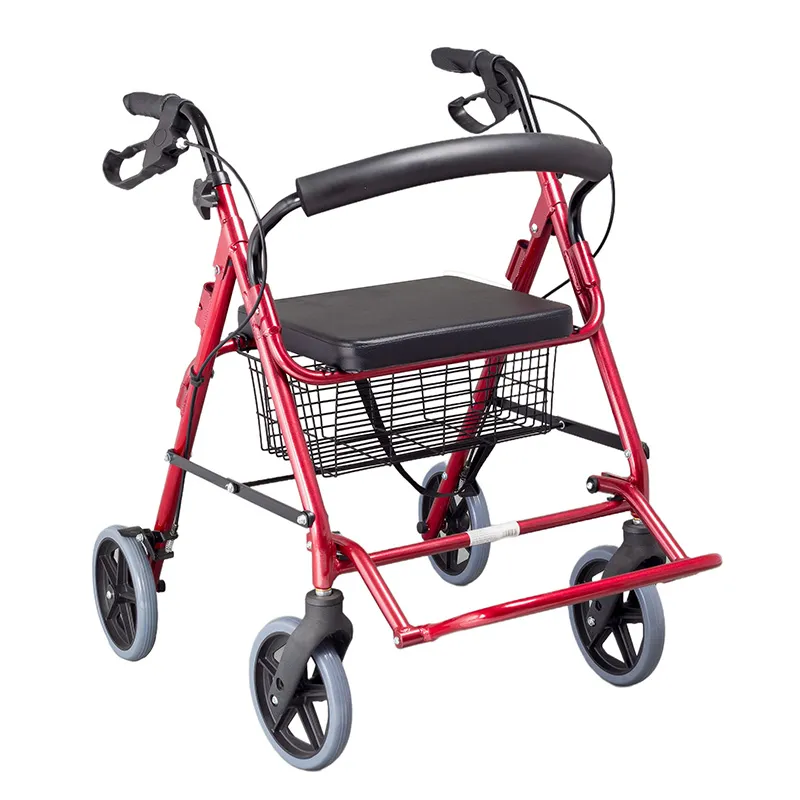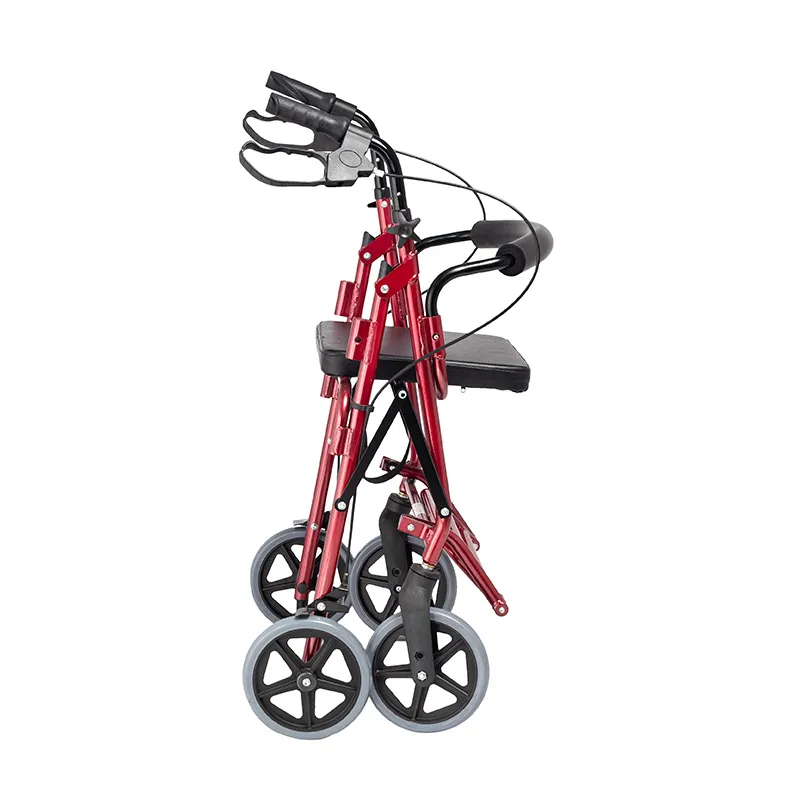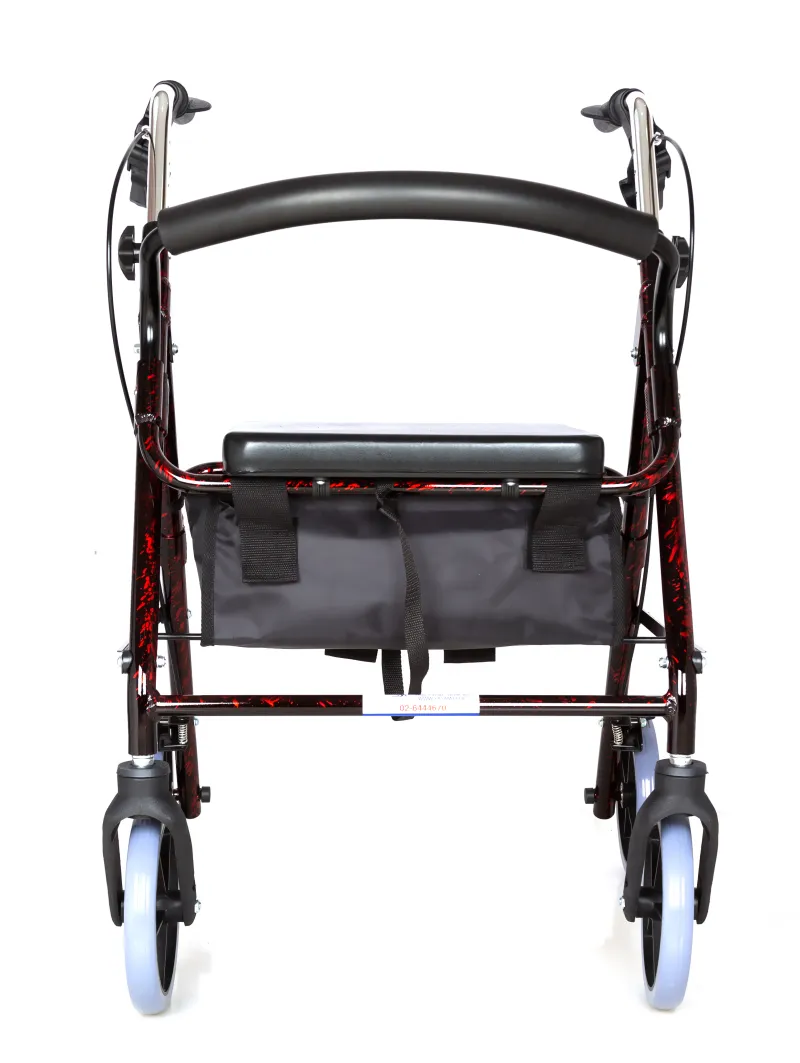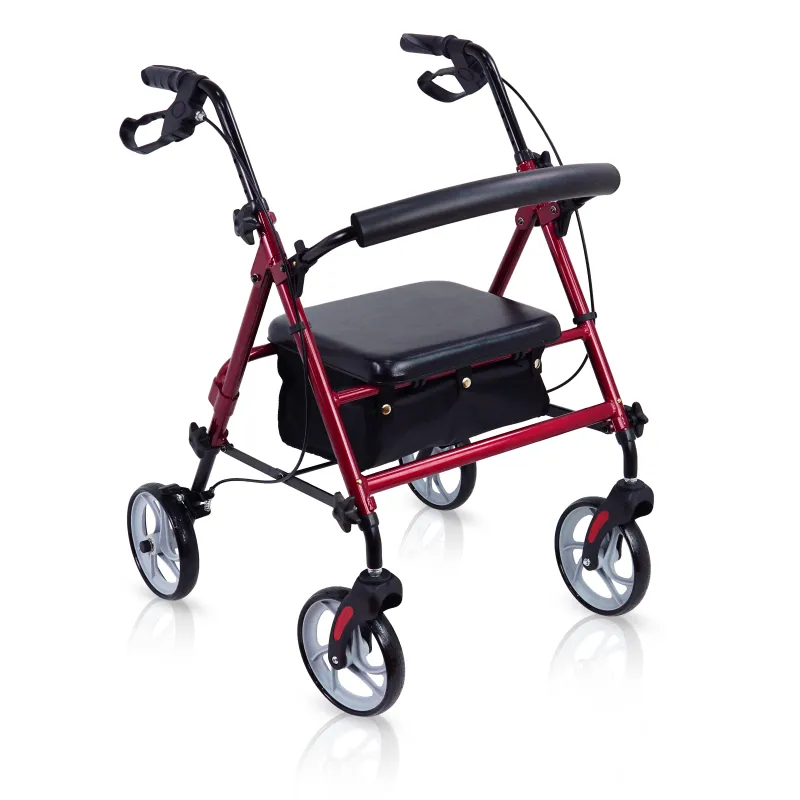
Can the elderly sit on a rollator walker and be pushed around?
2024-08-07 15:30
With the advent of an aging society, more and more elderly people are beginning to rely on rollator walkers to maintain their independence and freedom of movement in their daily lives.
However, the correct use of rollator walkers has always been a question that needs attention. Many people may have a question: Can the elderly sit on a rollator walker and be pushed around?
This article will analyze this issue in detail and explain why this practice is generally not recommended.

Design and function of rollator walker
A walker, especially a rolling walker, usually consists of four wheels, a seat, a brake system, and a handle. Its main function is to provide support and stability for elderly people who have difficulty walking, so that they can maintain balance while walking and sit down to rest at any time when they feel tired. Therefore, the rollator walker was not originally designed to be used to push the elderly.
Can the elderly sit on a rollator walker and be pushed around?
No, sitting on a rollator walker and being pushed around is very risky. The following explains some of the main risks and potential problems from the four aspects of the structural stability of the rollator walker, the load-bearing capacity of the wheels, the brake system, and the sitting posture of the elderly:
1. Structural stability:
The structure of the rollator walker is mainly to support walking, not to carry and move the person sitting on it. Sitting on a rollator walker and being pushed will increase the load on the rollator walker, especially on uneven or inclined ground, which may cause the rollator walker to lose stability and increase the risk of tipping over.
2. The load-bearing capacity of the wheels:
The wheels of the rollator walker are usually designed to support part of the weight of the rollator walker itself and its users, rather than the full weight. Pushing the elderly sitting on the rollator walker for a long time will cause excessive pressure on the wheels and bearings, which may cause damage or failure of the wheels, leading to safety accidents.
3. Reliability of the brake system:
The brake system of the rollator walker is designed to provide a short braking function during walking, rather than to bear the additional pressure of sitting and being pushed for a long time. During the pushing process, the brake system may not be able to effectively control the speed and direction, increasing the possibility of accidents.
4. Elderly posture and safety:
Old people sitting on rollator walkers do not have safety belts or other fixing devices. If the rollator walker stops or turns suddenly, the elderly are prone to slipping or falling due to inertia. In addition, sitting for a long time may cause discomfort or injury to the spine and hips of the elderly.

Actual cases of rollator walker-related accidents
Some actual cases and survey studies have shown that the incorrect use of rollator walkers may cause serious injuries. Studies have shown that the probability of elderly people falling and getting injured increases significantly when rollator walkers are used improperly. Fractures, abrasions and other injuries caused by improper use of rollator walkers are often mentioned in reports from medical institutions and caregivers.
For example, a survey by the Center for Research on Aging Health in the United States pointed out that about 30% of rollator walker-related accidents are caused by users trying to sit on the rollator walker and be pushed. Such accidents usually lead to serious consequences such as fractures and head injuries, and may even be life-threatening.

Alternatives to rollator walkers: Advantages of wheelchairs
Compared with rollator walkers, wheelchairs are more suitable tools for sitting and being pushed for a long time. Here are some of the advantages of wheelchairs:
1. Sturdy structure: Wheelchairs are designed to carry seated users and provide long-term support and mobility. They are more sturdy and can withstand heavy weight and long-term use.
2. Comfort: Wheelchairs are equipped with comfortable seats and backrests, and are usually designed with seat belts to ensure that users remain safe and comfortable during movement. The seat and backrest are ergonomically designed to reduce the pressure on the body from long-term sitting.
3. Maneuverability: The wheelchair's wheels and brake system are more professionally designed to provide better maneuverability and stability. During the push, both the user and the pusher can more easily control the direction and speed, reducing the risk of accidents.
4. Versatility: Modern wheelchairs are usually designed with multiple functions, such as adjustable seat height, removable footrests, etc., to meet the different needs of users. In addition, some electric wheelchairs also provide more freedom of movement and convenience.

Conclusion
Using a rollator walker as a tool for pushing the elderly is a risky practice. Rollator walkers are not designed to carry and move seated people. Overloading them may cause structural damage, brake failure, and other safety hazards. Therefore, the elderly and their families should avoid this misuse and choose safer and more suitable alternatives, such as wheelchairs.








